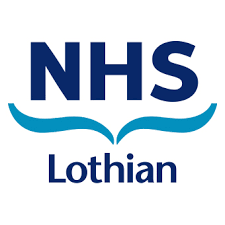IV to oral switch (IVOS) procedure

Oral antibiotics, especially those with high oral bioavailability, can be used effectively to treat infections.
When to consider oral switch:
1. Is your patient improving?
Thing to consider:
- patient clinically improving
- NEWS2 stable or falling
- infection markers (e.g. temperature, WCC) stable or falling.
2. Does your patient have an oral/enteral route?
Things to consider:
- patient eating/drinking/NG in place
- no GI issues (malabsorption/vomiting)
- patient compliance with orals
Can oral regimes be guided by positive microbiology samples/other relevant diagnostics?
For some bug-drug combinations high dose oral regimes may be required.
These infections are not necessarily a contraindication to oral regimes, indeed it’s becoming more common for oral regimes to be used. Please discuss with microbiology/infection specialist.
For common infections there are empirical oral switch antibiotics and empirical durations.
Common IVOS regimes can be found throughout our guidance and are summarised below:
| Indication |
Total duration (IV + oral$) |
Empiric Oral Switch | |
| 1st Line | 2nd Line/ Penicillin allergy/ Previous MRSA | ||
| 5 days |
Co-trimoxazole 960mg every 12 hours (IF intra-abdominal source likely ADD Metronidazole 400mg every 8 hours) |
Co-trimoxazole 960mg every 12 hours (IF intra-abdominal source likely ADD Metronidazole 400mg every 8 hours) |
|
| Skin and Soft Tissue Infections | |||
| Cellulitis | 5 days | Flucloxacillin 1g every 6 hours |
Doxycycline 100mg every 12 hours OR Clarithromycin 500mg every 12 hours |
| Diabetic foot infection (mild) | 7 days | Flucloxacillin 1g every 6 hours |
Doxycycline 100mg every 12 hours OR Co-trimoxazole 960mg every 12 hours |
| Diabetic foot infection (moderate) | 7 days |
Flucloxacillin 1g every 6 hours AND Metronidazole 400mg every 8 hours |
Co-trimoxazole every 12 hours AND Metronidazole 400mg every 8 hours |
| Human/Animal Bite Infection | 5 days | Co-amoxiclav* 625mg every 8 hours |
Doxycycline 100mg every 12 hours AND Metronidazole 400mg every 8 hours |
| Respiratory Infections | |||
| Community Acquired Pneumonia (CURB 0-2) | 5 days | Amoxicillin+ 500mg-1g every 8 hours | Doxycycline 200mg on first day then 100mg daily |
| Community Acquired Pneumonia (CURB 3-5) | Co-amoxiclav*+ 625mg every 8 hours | Doxycycline 200mg on first day then 100mg daily | |
| Aspiration Pneumonia (low severity) | Amoxicillin 1g every 8 hours |
Co-trimoxazole 960mg every 12 hours OR Doxycycline 200mg on first day then 100mg daily |
|
| Aspiration Pneumonia (high severity) |
Amoxicillin 1g every 8 hours AND Metronidazole 400mg every 8 hours |
Co-trimoxazole 960mg every 12 hours AND Metronidazole 400mg every 8 hours OR Doxycycline 200mg on first day then 100mg daily AND Metronidazole 400mg every 8 hours |
|
| Hospital-acquired Pneumonia (late onset) | Doxycycline 200mg on first day then 100mg daily | Co-trimoxazole 960mg every 12 hours | |
| Urinary tract Infections | |||
| Pyelonephritis/ Urosepsis/ Upper Urinary Tract Infection | 7 days |
Co-trimoxazole 960mg every 12 hours OR Co-amoxiclav* 625mg every 8 hours |
Co-trimoxazole 960mg every 12 hours |
| Intra-abdominal Infections | |||
| Biliary tract infection/ Appendicitis/ Diverticulitis |
5 days (after adequate source control) |
Co-trimoxazole 960mg every 12 hours AND Metronidazole 400mg every 8 hours OR Co-amoxiclav* 625mg every 8 hours |
Co-trimoxazole 960mg every 12 hours AND Metronidazole 400mg every 8 hours |
| Spontaneous bacterial peritonitis | 5 days |
Co-trimoxazole 960mg every 12 hours OR Co-amoxiclav* 625mg every 8 hours |
Co-trimoxazole 960mg every 12 hours |
*Suitable for those ≤ 65 years old with a low risk of C.diff infection (CDI). See risk factors for CDI.
+ For CAP consider if atypical cover required (patient has risk factors or compatible clinical features), see atypical pneumonia.
Please remember to add stop dates for prescriptions e.g. in HEPMA.